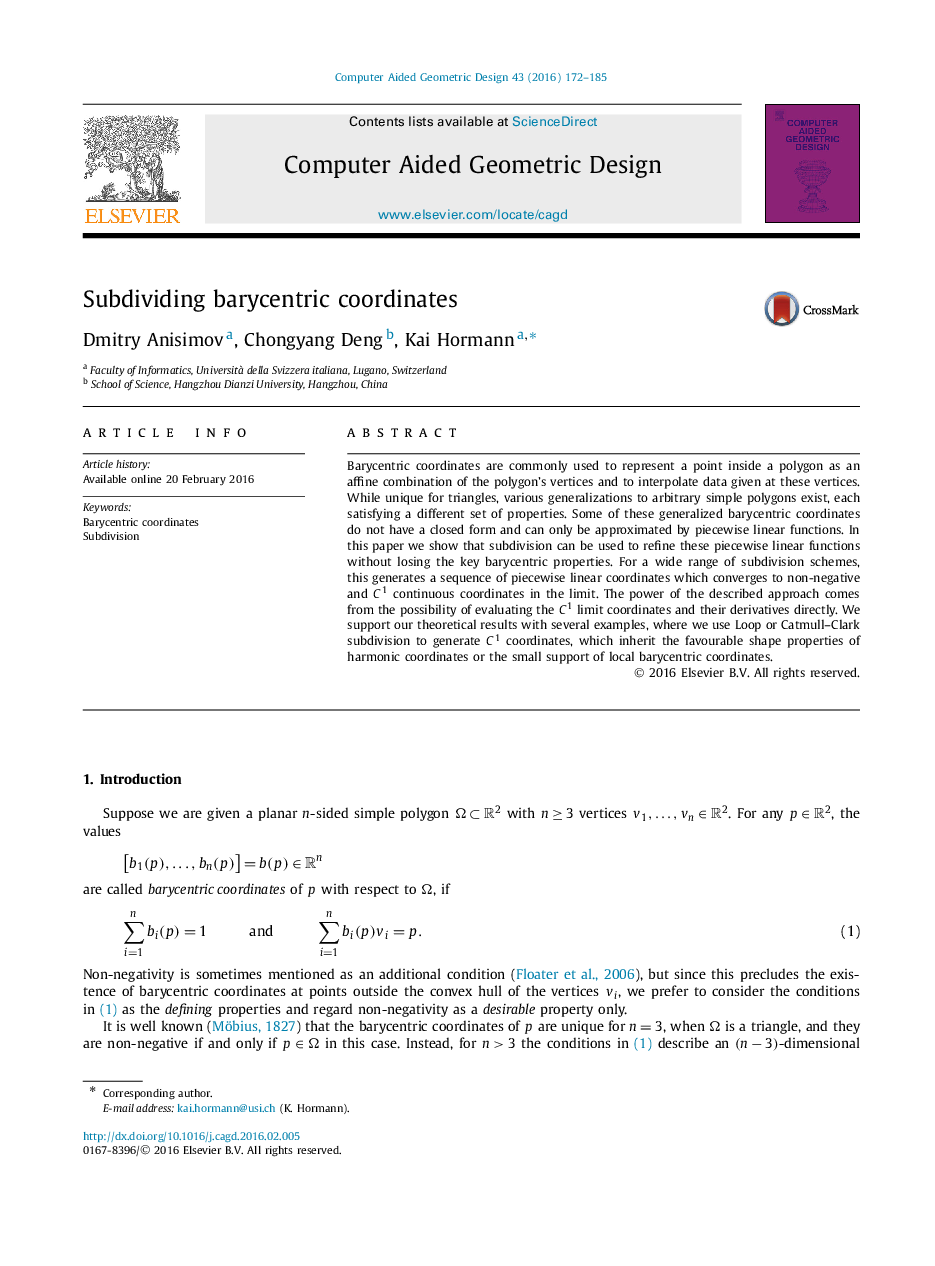| Article ID | Journal | Published Year | Pages | File Type |
|---|---|---|---|---|
| 441127 | Computer Aided Geometric Design | 2016 | 14 Pages |
Barycentric coordinates are commonly used to represent a point inside a polygon as an affine combination of the polygon's vertices and to interpolate data given at these vertices. While unique for triangles, various generalizations to arbitrary simple polygons exist, each satisfying a different set of properties. Some of these generalized barycentric coordinates do not have a closed form and can only be approximated by piecewise linear functions. In this paper we show that subdivision can be used to refine these piecewise linear functions without losing the key barycentric properties. For a wide range of subdivision schemes, this generates a sequence of piecewise linear coordinates which converges to non-negative and C1C1 continuous coordinates in the limit. The power of the described approach comes from the possibility of evaluating the C1C1 limit coordinates and their derivatives directly. We support our theoretical results with several examples, where we use Loop or Catmull–Clark subdivision to generate C1C1 coordinates, which inherit the favourable shape properties of harmonic coordinates or the small support of local barycentric coordinates.
